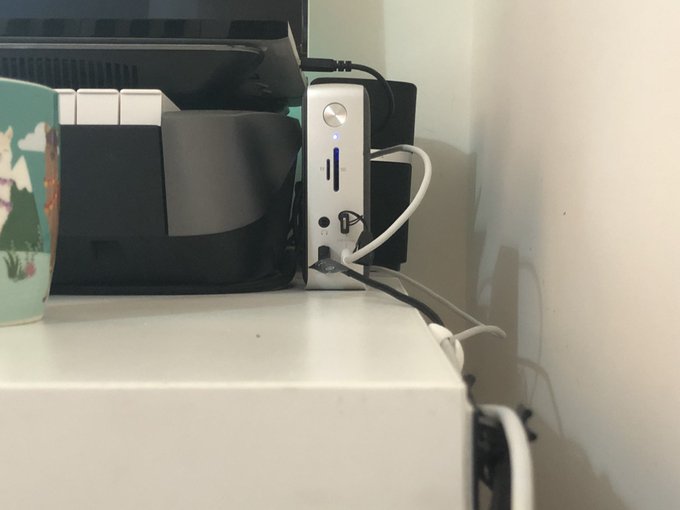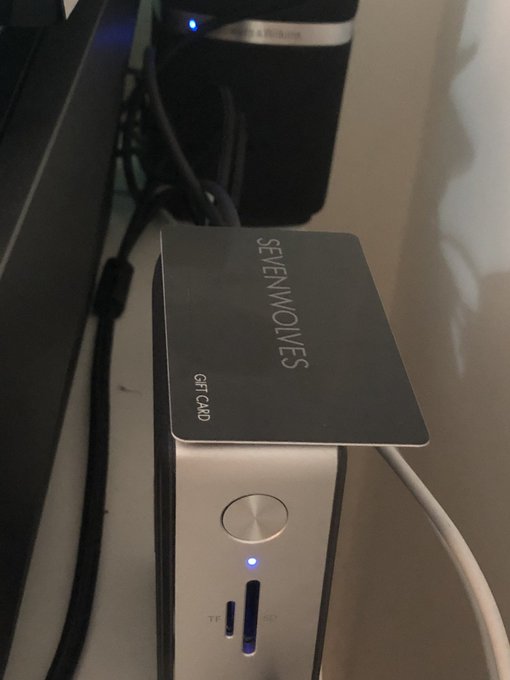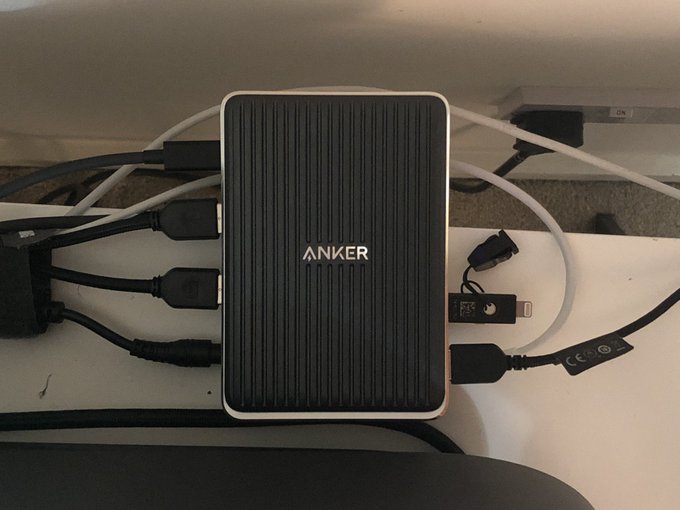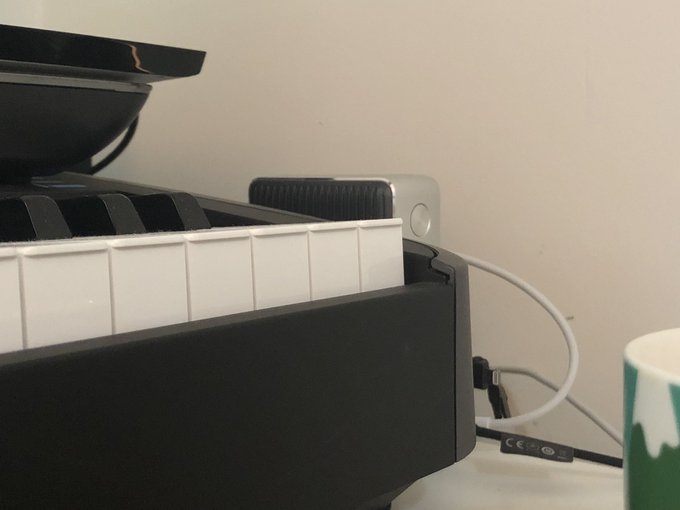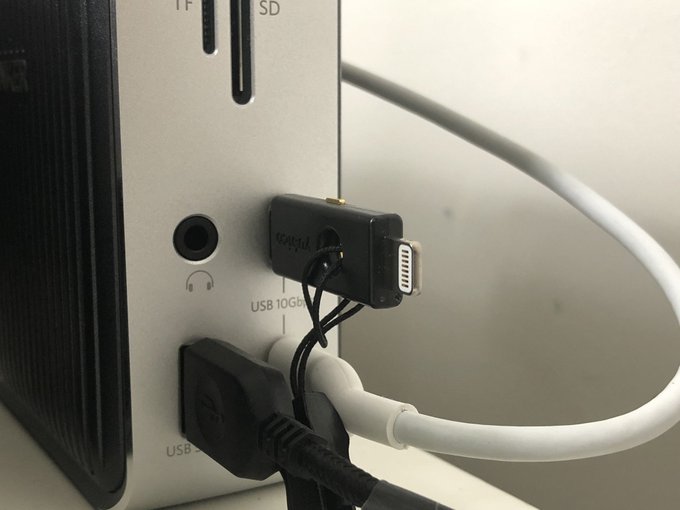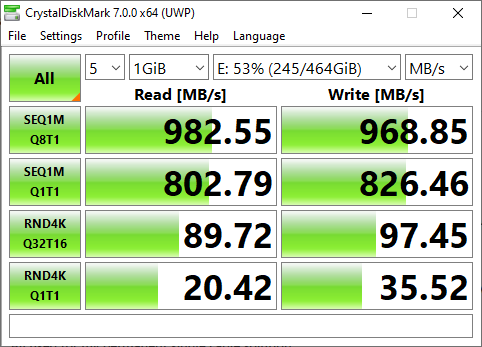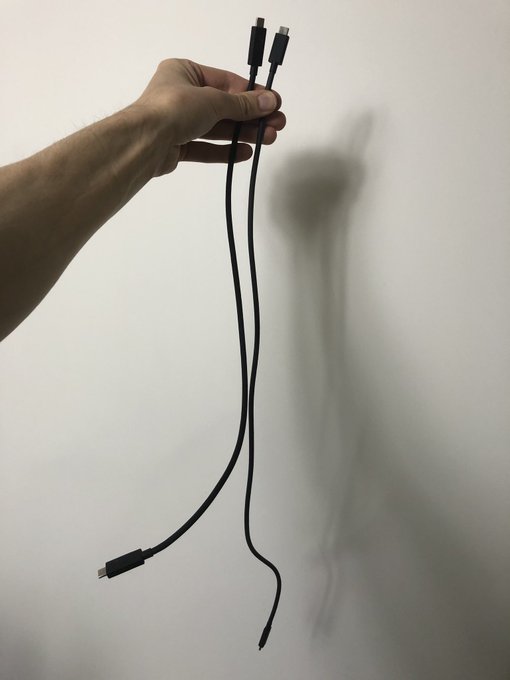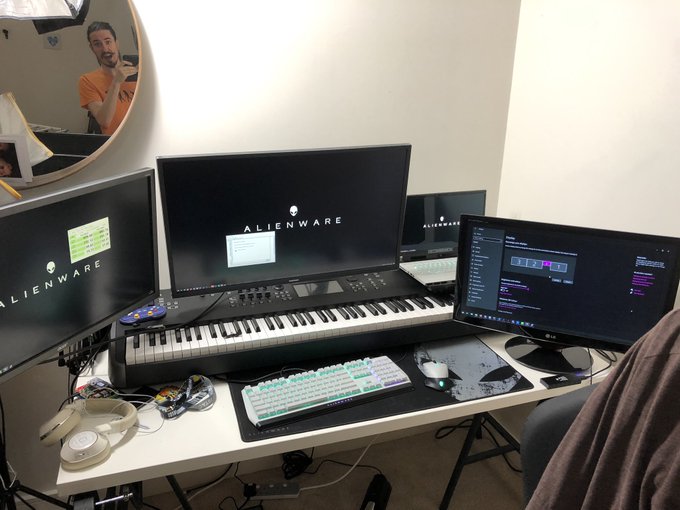Anker PowerExpand Elite Thunderbolt 3 Dock Reviewed
Anker have entered the Thunderbolt 3 arena with guns blazing, taking me by surprise with their compact, aesthetically pleasing, consumer-focussed 12-in-1* dock. The Anker PowerExpand Elite brings some striking good looks and a compact form-factor to a market that’s full of uninspiringly utilitarian oblong slabs.
* I count 12 ports, Anker, you can’t count the cable that connects it to your bloody computer!
When Anker reached out about their Wireless portable charger, I couldn’t resist asking to check this thing out and fortunately they obliged. I’m a sucker for Thunderbolt 3 stuff, though it’s such a byzantine bundle of specifications and caveats that I’m not sure I’ll ever be an expert.
Thunderbolt 3 docks, despite their many flaws, incompatibilities and frustrations, have become a mainstay, keeping the single-cable-docking dream alive for many. But what they’ve been sorely lacking until now is some visual pizazz. It’s clear the majority of the market, judging by appearance and price, is geared toward prosumer and professional setups with blocky, uncomplicated designs and haphazard port placement being the norm. The best looking up until now, and in my humble opinion, have been OWC’s Thunderbolt 3 docks, but those are put to shame by the crisp, good looks of Anker’s entry.
I love how this thing looks. I’m pretty confident that every other Thunderbolt 3 dock to date is a utilitarian eyesore. pic.twitter.com/XCg7EfRiRD
— Phil Howard (@Gadgetoid) July 27, 2020
The PowerExpand Elite is an upright style dock that blends matt grey plastic with a matt aluminium band. It’s accented by a machined power button and polished edges that give it an attention to detail and desire to stand out that hasn’t been seen in the dock market since, perhaps, Kensington’s quirky SD5200T. It stands about an inch proud of a good-sized coffee mug and has a footprint about the size of a credit-card- well two-thirds of one in any case.
Pretty sure @AnkerOfficial were going for “credit card footprint” on the marketing but their engineers screwed up and accidentally made it smaller. pic.twitter.com/0cAR8sN0n2
— Phil Howard (@Gadgetoid) July 27, 2020
On the front is- an odd choice for a Thunderbolt dock- a power button and not-too-bright blue power LED, a microSD slot, a full-sized SD slot, a 3.5mm combo audio/microphone jack, a USB 3.1 (Gen 1, 5Gbps) port and two USB Type-C ports supporting Gen 2, 10GBps throughput. On the back are three more USB 3.1 (Gen 1, 5Gbps) ports, a Gigabit Ethernet port, a 4K@60Hz HDMI (2.0) port, a pass-through Thunderbolt 3 port and, last but not least, the input jack for the stonking 180W adapter needed to power this thing.
Like the power button on the front (which has led the dock to be confused as a mini PC by some), the HDMI port is an unusual choice. It’s fair to say that most Thunderbolt 3 docks opt for DisplayPort or Mini DisplayPort, which can be trivially adapted to HDMI if necessary, and – indeed – the only docks I have tested with exclusively HDMI ports thus far have been USB Type-C and not Thunderbolt. I would wager that Anker chose HDMI specifically to aim this dock at the consumer market; providing a familiar connection that’s guaranteed to be compatible with the widest range of monitors without needing an extra adapter. More interestingly, the dock uses the DisplayPort alt-mode of USB Type-C and adapts it to HDMI rather than using the HDMI alt-mode- this will be because HDMI alt mode does not support HDMI 2.0, and thus does not support 4K@60Hz.
Of course, I have to be the one person with a monitor that *hates* HDMI input and ended up hooking my monitor up to this dock using StarTech’s Thunderbolt 3 to Dual DisplayPort adapter which I tested waaay back in 2017. The bright side of this odd configuration is that I can confirm Anker’s pass-through Thunderbolt 3 port works as expected and I was able to drive two 4K@60Hz displays via DisplayPort with no problems whatsoever.
Indeed, my complete suite of connected peripherals is as follows:
- Yamaha MODX8 (USB MIDI and multi-channel audio interface)
- Alienware AW510K keyboard and AW610M mouse (either the wireless dongle or wire depending on whether my batteries have run out)
- Alienware AW510H headphones plugged into the front USB port (since the USB wire supplied is the longer of the two)
- Yubikey 5Ci plugged into one of the front USB Type-C ports
- Anker USB Type-C to Lightning cable (for charging my iPhone) plugged into the other front USB Type-C port
- StarTech Thunderbolt 3 to Dual DisplayPort adaptor plugged into the downstream Thunderbolt 3 port (with both one and two 4K 60Hz displays)
You’d look like this too with 7 cables coming out of you. pic.twitter.com/nWjsjE04aB
— Phil Howard (@Gadgetoid) July 27, 2020
While I’m not pushing the boat out with any of these peripherals, it’s a ridiculous spaghetti of things sticking out of the Anker dock. The sheer quantity and variation of wires highlight a weakness of the upright form-factor- it’s very much dependent upon your desk layout to find a way to route the cables tidily.
But for the most part my piano blocks the sight line to the spaghetti mess so I don’t have to care. pic.twitter.com/BbMMqgS5sU
— Phil Howard (@Gadgetoid) July 27, 2020
On the front
Unlike pretty much any other Thunderbolt 3 dock on the market, Anker have again differentiated themselves in the quantity and selection of ports they include up-front. While three USB-capable ports, audio and two different SD slots might not sound like a lot, we’re talking about a market where you’re lucky to get *one* port. The exception to this is OWC’s excellent dock which still manages to fall short of Anker’s offering by one USB Type-C port. The microSD and SD card slots on Anker’s offering are also raised above the desk, and decidedly easier to access.
Anker also seem to have a knack for aesthetically pleasing placement of ports. It’s not uncommon for docks to appear like the ports have been thrown on randomly from a distance and the position of the PCB internally, plus the various different sizes/shapes of ports don’t make placement an easy job. Anker- however- have meticulously placed the front and even the rear ports such that they line up both horizontally and vertically. I appreciate this. They’ve conscientously kept free space around the SD slots, and ensured that the Power Delivery port is located right at the bottom so you can just plug in a phone charger and forget it- it’ll be out of the way. Personally I’d have swapped the 3.5mm jack with the front USB port since headphones might also be a plug-and-forget device that would be nicely out of the way at the bottom… but then my headphones are plugged into the USB port so it’s fine for me.
More than 3 weeks later and I’m still using the @Yubico 5Ci every day. Discovering agent forwarding has really made it all the more useful. pic.twitter.com/VgXh1ZorK2
— Phil Howard (@Gadgetoid) July 29, 2020
The microSD slot is a push-push type that almost swallows the card whole, but fortunately it remains easy to remove (*cough* unlike *cough* OWCs *cough*). Surprisingly the SD card slot is *also* push-push, but leaves plenty of the card proud for triggering ejection. I don’t know how to feel about push-push SD slots (the type you push to insert, and push – I’ve managed to send microSD cards sailing across the room with them before, and I’m always a little worried that the extra mechanical complexity is just asking to fail. These feel reassuringly solid, and while it’s possible to ping cards across the room with some effort, the natural resting place of your hand on top of the dock, with a thumb releasing the card ensures pretty smooth operation.
The power button makes for a nice visual feature and you might be forgiven for wondering what on earth it’s actually for. I’ve just left my docks always-on, save for the occasional and near inevitable times that they screw up. It only happens once every blue moon but my office OWC dock will occasionally require a power cycle to be happy- Anker have, intentionally or not, not only made power-cycling quick and easy but almost invited the user to turn their dock off when it’s not in use… thus quietly side-stepping any rare issues that might occur by leaving it always-on.
Thunderbolt 3… we meet again
Thunderbolt 3 weirdness seems to strike me at every turn, and Anker’s dock certainly isn’t exempt from exhibiting a few issues with my setup. First and foremost my primary workstation- the Alienware m15 r2- currently wont detect the microSD and SD card slots on the dock without a fresh reboot. My replacement- the Alienware m15 r3- however, works absolutely fine.
In the same vein, my Alienware m15 r2 has serious audio drop-out issues when playing audio through the interface in my Yamaha MODX8 to its connected speakers. This doesn’t happen at all with my USB headphones. This also does not happen with the Alienware m15 r3. Two completely different issues, both fixed by trying a different computer pretty much sums up my experience of Thunderbolt 3 and highlights the importance of checking the experience of others using your particular workstation/computer setup. For the elmination of all doubt I replaced my stock SSD into my m15 r2 and ran through the Windows 10 Pro postinstall setup until the system booted- hooked up the dock and encountered exactly the same issue. SD card slots M.I.A. Weird. If you’re an Alienware m15 r2 user then I’m afraid the Anker PowerExpand Elite just isn’t for you. If you use an m15 r3 then you’ll be just fine.
To see if any other weirdness had been reported with Anker’s dock I checked the Amazon reviews and found one from a fellow Raspberry Pi user (hi!) stating stuttery mouse movement when using a high speed disk drive connected via USB Type-C. I attempted to repeat this test using an StarTech external USB Type-C enclosure containing an NVM.e drive (I’m still holding out hope OWC will send me their Envoy Express). I ran CrystalDiskMark on the external drive, and continued to use my computer as normal. No stutter, no issues, and some benchmark results that – while not groundbreaking – aren’t something to sniff at. Still, as I suggest above, that doesn’t eliminate specific issues arising from certain dock/computer combinations.
Just blew ALL TEH DATA through this dock while continuing to use my system as normal. No issues. Doesn’t really confirm anything other than “it works with my specific setup” though… thank you Thunderbolt 3… for being such a convoluted mess. pic.twitter.com/TP0c9M7L3i
— Phil Howard (@Gadgetoid) July 27, 2020
Not one to be easily defeated I plugged in a spinning rust disk into another port and fired up a second instance of CrystalDiskMark to run the two in tandem, in an effort to see if any mouse stuttering would occur. The spinning rust didn’t fare quite so well (no surprises there), but I encountered no system issues:
Smooshing data onto two disks simultaneously in an effort to identify any throughput hiccups. Still… nada. Though I suspect the spinning rust isn’t exactly pushing the boat out here… pic.twitter.com/MrfC4mvJsR
— Phil Howard (@Gadgetoid) July 27, 2020
Bear in mind this is on top of pushing the downstream 4K@60Hz Thunderbolt 3 display. We’re all good here. It’s clear that the Anker dock has the capacity to read/write files to an external drive at around 900MB/s if you’re tooled up with shiny USB Type-C NVM.e enclosures. At least from Windows 10, anyway.
The cable
Every Thunderbolt 3 dock I’ve tested to date has had a cable like a hosepipe offcut. Short, inflexible and frustrating to deal with. The strain put on USB Type-C ports by these monsters can’t exactly be healthy. Anker’s PowerExpand Elite is the newest dock I’ve tested by quite some months (baby hiatus) and comes with a slightly thinner, more flexible cable than those I’ve encountered in the past. End-to-end it’s also a good 15cm or more longer than my in-spec 0.5m cables, which is tremendously convenient for laptop placement but might potentially place it out of the tolerance necessary for a full 40Gbps throughput. Anker specify the cable as 2.3ft which is approximately 70cm but their marketing also leans on the “40Gbpsness” of Thunderbolt which requires- ostensibly- a 50cm cable.
Anker’s Thunderbolt 3 cable is deliciously long. But is it out of spec for 40Gbps at 70cm? To be fair I don’t think they ever claim it *is* a 40Gbps cable, and I don’t think many people push that envelope. I’m struggling to break 20Gbps. pic.twitter.com/gTmscE6q90
— Phil Howard (@Gadgetoid) July 29, 2020
The cable is not active- either- it’s a basic passive cable without obnoxiously long connectors. In this case it may be that Anker have made the executive decision to provide their dock with a friendlier, longer, more flexible cable that will appeal to 99.9% of users versus a definitely-100%-spec-compliant-40Gbps-compatible cable that will frustrate those same users with its lack of length. Seriously- my laptop is situated right next to the dock and even the simple act of plugging in/removing the cable is made much less of a hassle by that extra 20cm.
To get really technical, hooking up a 1080p monitor (~3Gbps) alongside my 4K monitor (~12Gbps) and blasting 980MBps onto an external SSD (~8Gbps) gave me a grand total of just under 23Gbps sustained throughput- certainly exceeding the 20Gbps barrier but not by much.
JUST
ONE
MORE
DISPLAY
That’s 2 4K displays, a 1080p highly compressed USB2 display and an NVMe Drive.And you know what- I think disk IO is starting to suffer. Or maybe it’s confirmation bias. pic.twitter.com/dzAEvJG1XE
— Phil Howard (@Gadgetoid) July 29, 2020
Bumping this up to two 4K monitors (24Gbps) plus simultaneous reads from the same SSD gives me gives me 32Gbps, and even adding a 480Mbps USB to HDMI adapter into this mix couldn’t get a hiccup out of the setup. While I suspected the external SSD was slowing down, repeated tests never dipped below 940Mbps. I ran out of things to edge me closer to 40Gbps but I’m happy that in all but the most extreme usecases you will have no issues with throughput. It’s worth noting that Thunderbolt will degrade data connections before it affects displays- for what I assume are obvious reasons. It’s much easier to see a picture on a monitor degrade than it is bytes flying over a wire onto a hard disk.
Anker are not alone in the longer-than-the-spec-decrees Thunderbolt 3 cable market, either. Apple appears to have been the first entrant with their 80cm cable, followed shortly by an avalanche of other manufacturers including StarTech, Belkin and Pluggable. Obviously electrons don’t magically see that they’ve displaced 50cm and go “I’m done now,” so it’s highly possible that stable 40Gbps speeds are achievable through a longer cable. The actual physics of the connection is far more complicated than this, however, which is why there’s a specification in the first place, but with a groundswell of brands offering 80cm it’s clearly stable enough that those frustrating 50cm cables are now a thing of the past.
At first I thought that Apple’s sheer size and prevelance have allowed them to buck the trend and push the envelope of Thunderbolt cable length- opening up the market to copycats who can just say “well Apple did it,” if anyone asks why their cable is out of spec. While I can’t find anyone saying *how* the envelope has been pushed from 0.5m to 0.8m (thicker gauge wiring doesn’t ring true with my limited EE experience), having that extra length is more than welcome. I asked the ever-knowledgable Plugable about this, and they suggest that continued improvement to Thunderbolt 3 by Intel’s engineering team has made >50cm cables possible and that they are, in fact, in-spec.
Either way – Anker putting a 70cm cable in the box, rather than sticking you with a 50cm cable that you’ll almost certainly want to upgrade, is – by my estimation – a thoroughly good move.
Hot potato!
The Anker dock does run hot, but in my experience it’s not abnormal compared to other Thunderbolt 3 docks I’ve tested. Its small size and upright design means most of the heat is concentrated along the top which might make it feel a little alarming to some. Bear in mind- however- that it is distributing 180W of power between a computer and multiple attached peripherals.
Power Overwhelming
Another feather in the cap of this diminuative dock is the 85W upstream Power Delivery. It’s not pushing the boat out in comparison to other Thunderbolt 3 docks, but it’s reassuring that Anker are keeping up with the jonses and not making compromises here. 85W is sufficient for most 13″ laptops and will keep some 15″ laptops happy depending on power requirements, but you may find that beefier systems – the Alienware m15 requires a 230W power supply – will still require their normal power supply. This is fine, and wont harm your system, but does tarnish the single cable dream a little.
That’s a high, high price for convenience
But it’s worth it.
Let’s be real here; the Anker PowerExpand Elite currently retails on Amazon for a stonking £280. It’s a brand new product, and the price is on par with the likes of OWC and Elgato but is undercut by CalDigit’s TS3 Plus which has a similar set of features in an uglier package (and also ships with a 70cm cable). Thunderbolt 3 docks are still an expensive product category, but the convenience they bring to the table – or desk, as it were – is more than worth it.
Unlike many other docks Anker appear to have optimised for the consumer market and their dock provides widely compatible HDMI connectivity (older, or lower-resolution monitors may not have DisplayPort) plus a good variety of the most useful ports front and center on the dock- probably the most I’ve seen on the front of any dock. Their attention to detail is – in my humble opinion – worth the premium. The longer cable may soon be standard across the market, but for now it sets Anker aside from the Elgatos and OWCs that still ship with 50cm, and might save you that extra £40.
Now I’m not damning Anker with faint praise by calling them consumer, but rather rewarding them for recognising that there’s a much wider market for a single-cable dock than just office desks.
Systems Under Test
Note: I’ll endeavour to expand this list as test systems cross my desk.
- 2016 TouchBar MacBook Pro – Pass, all good!
- Alienware m15 r2 – Failed, audio drop-out to Yamaha MODX and missing SD card slots
- Alienware m15 r3 – Pass, all good!
- Dell XPS 13 2-in-1 7390 – Pass, all good!
Note that in spite of the issues I continue to use my r2 with the Anker dock while I prepare to migrate to the r3. It’s easy enough to plug *one* USB cable directly into my laptop, and most of my SD card operations require a Linux computer anyway.
